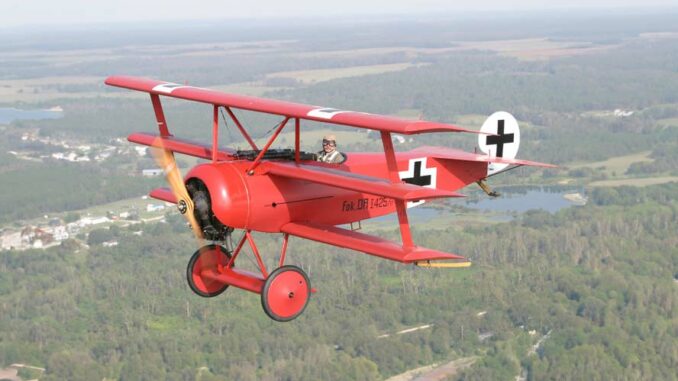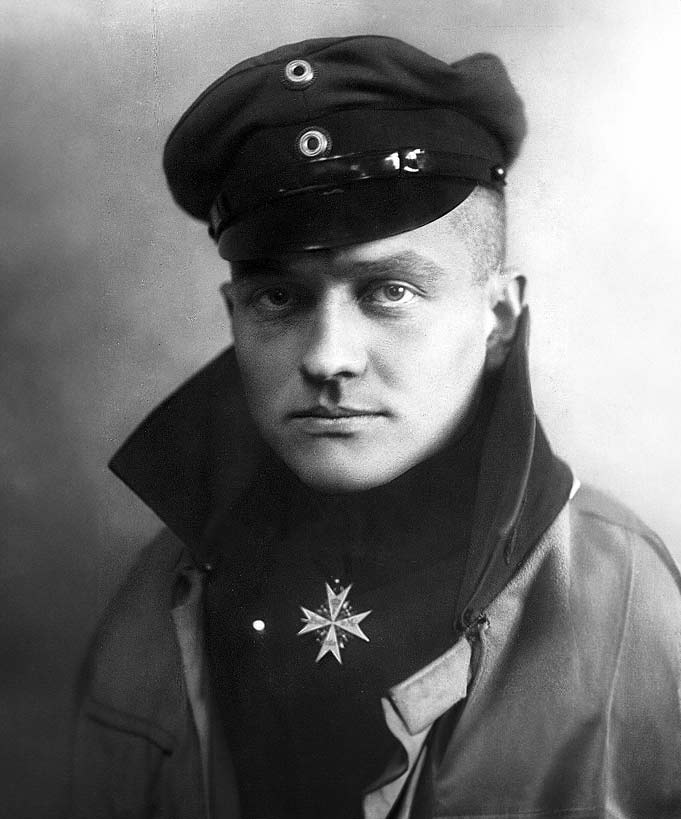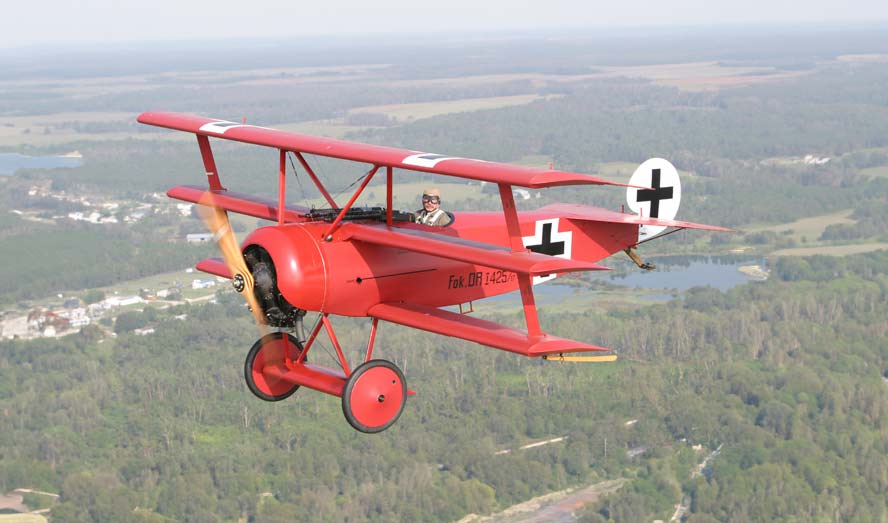
The skies of the First World War were the scene of epic confrontations and unforgettable heroes. Among them, Manfred von Richthofen, better known by his nickname “The Red Baron”, remains an emblematic figure of military aviation. His brief but intense life is a blend of bravery, skill and mystery that continues to fascinate.

Youth and early aviation
Born into a Prussian noble family in Breslau on May 2, 1892, Manfred von Richthofen was destined for a military career from an early age. After serving in the cavalry, he turned to aviation, fascinated by this new dimension of warfare. In 1915, he joined the German Air Service and began his pilot training.
Rise to Glory
Richthofen quickly distinguished himself by his piloting skills and shooting accuracy. In 1916, he scored his first aerial victory. His reputation began to grow, first among his peers, then throughout the German army. He became a figurehead of the German fighter, inspiring respect and awe.
The Red Baron
The nickname “Red Baron” was bestowed on him because of his noble heritage and his famous aircraft, a Fokker Dr.I triplane, painted bright red. This choice of color was not just a matter of style: it was also an intimidation tactic and an easy way for his allies to recognize him in the chaos of aerial combat.
An Ace of War
Richthofen is credited with 80 confirmed victories in aerial combat, a record at the time. His ability to anticipate enemy movements and his skill at maneuvering his aircraft made him a feared adversary. He was known to be methodical and calculating, preferring strategy to rash bravery.
The Jasta 11 and the Cirque Volant
In January 1917, Richthofen took command of Jasta 11, a squadron made up of some of the world’s finest pilots. Under his leadership, Jasta 11 became a formidable force on the Western Front. The group was nicknamed “The Flying Circus” because of the variety of bright colors Richthofen encouraged his pilots to paint on their aircraft.
Perception and impact
The figure of the Red Baron went far beyond that of a mere war pilot. For Germany, he was a hero, a symbol of strength and skill. To his opponents, he was a respected and honorable adversary. His death on April 21, 1918, shot down by enemy fire, was greeted with respect on both sides of the conflict. The Allied forces even paid him military honours at his burial.

Anecdotes and heritage
- An Admired Adversary: Richthofen earned the respect of his enemies. Canadian Captain Arthur Roy Brown, credited by some with his death, expressed deep respect for the Red Baron after his passing.
- A Mentor: Richthofen was also a mentor to young pilots, including the famous Hermann Göring, who served under him.
- A Myth Maintained: Richthofen’s personality and fighting style have inspired numerous books, films and legends, helping to forge the myth of the Red Baron.
- His Last Stand: The exact circumstances of Richthofen’s death are still a matter of debate. Although Brown has been officially recognized for this victory, some historians suggest that the fatal shot may have come from a soldier on the ground.
- Tribute from the Enemy: His burial by Australian forces with military honors testifies to the respect he commanded even among his enemies.
Manfred von Richthofen, the Red Baron, remains an emblematic figure in military and aviation history. His legend lives on, symbolizing the daring, skill and chivalrous spirit of the early days of combat aviation. His life, work and death continue to inspire and fascinate, testifying to the complexity and humanity of the brutal context of war.